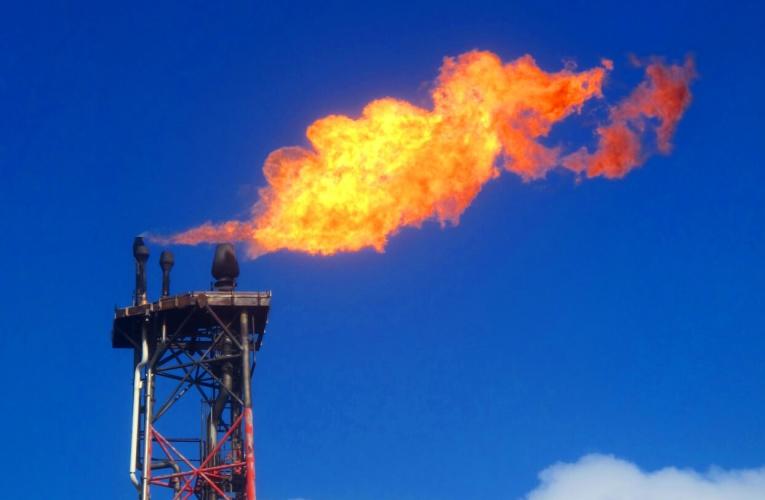Tim Lucas
(919) 613-8084
tdlucas@duke.edu
DURHAM, N.C. – Using satellite images, scientists have detected hundreds of very large and previously unreported methane releases at oil and natural gas production sites across the globe.
Methane is a short-lived greenhouse gas that can be up to 80 times more potent than carbon dioxide at warming Earth’s atmosphere when it first enters the atmosphere. A 2021 United Nations climate report, led by Duke University’s Drew Shindell, found that reducing methane emissions would be the most cost-effective way to slow the rate of Earth’s warming in coming decades.
The new satellite-aided study, which Shindell coauthored, found about 1,200 previously undocumented “ultra-emitter” methane releases at oil and gas production, storage and distribution facilities worldwide over a two-year period. These included both leaks and deliberate releases for maintenance work and other reasons.
Ultra-emitter releases can emit more than 25 tons of methane into the atmosphere per hour. The methane escaping from the 1,200-or-so newly detected ultra-emitters is estimated to be roughly equal to about a year’s worth of emissions from 20 million vehicles.
Although the releases individually were very large, the number of them detected over the two years was relatively small, the researchers noted. This suggests they may be just the tip of the iceberg and that methane emissions from global oil and gas production have been widely underestimated.
“Current satellites can only detect the largest methane plumes. Yet collectively, these ultra-emitters account for about 10% of past estimates of all methane emissions coming from oil and gas production activities across six major oil and gas producing countries—an incredibly large contribution for such a limited number of leaks,” said Shindell, Nicholas Distinguished Professor of Earth Science.at Duke’s Nicholas School of the Environment.
The researchers published their peer-reviewed findings Feb. 4 in Science.
“To our knowledge, this is the first worldwide study to estimate the amount of methane released into the atmosphere by maintenance operations and accidental releases,” said Thomas Lauvaux, an atmospheric scientist with the French National Center for Scientific Research’s Laboratory of Climate and Environmental Sciences’ “Make Our Planet Great Again” initiative.
Working with Clément Giron, a data scientist at Kayrros Inc., Lauvaux used high-resolution atmospheric modelling and machine learning algorithms to quantify methane plumes that were detected at oil and gas production sites over the two-year study by the European Science Agency’s Sentinel-5P satellites. He and Giron then aggregated their emissions estimates at a national scale to shed light on how much of each nation’s reported emissions might be attributable to the ultra-emitters, while Shindell used climate model simulations and technology analyses to assess the costs and benefits of mitigating the leaks.
“We found that capturing the methane from these ultra-emitters would provide enormous benefits via reduced climate change and improved air quality, so that society as a whole would come out billions of dollars ahead” thanks to reduced climate and human health costs, Shindell said.
“As the captured methane is a valuable commodity, the companies or countries capturing the leaks also typically come out ahead,” he said.
“What our study has done is not only provide a first estimate of large methane emissions that can only be seen from space, but also show how these detections relate to the whole story. This is a giant step towards overcoming the current limitations of the methane surveillance system and getting the long-elusive big picture” said Giron.
About 25% of Earth’s human-derived methane emissions stems from oil and natural gas production activities, which have significantly increased over the last 20 years, in part because of ramped up gas production in Russia and the United States.
Despite the new study’s success at spotting very large plumes, the vast majority of unreported methane releases are too small to be visible from space using Sentinel-5P satellites, Lauvaux said.
To capture those emissions in future studies, the researchers plan to use additional satellites that provide higher-resolution images than the Sentinel-5P but only cover parts of the globe at lower frequencies. They also plan to expand the focus of their investigations to include releases from coal extraction and farming activities.
Funding for the new study came from France’s “Make Our Planet Great Again” initiative; NASA; the Agence Nationale de la Recherche ‘s Investissements d’avenir program; the European Space Agency; NASA Carbon Monitoring System; and the High Tide Foundation and NASA Jet Propulsion Laboratory.
CITATION: “Global Assessment of Oil and Gas Methane Ultra-emitters,” T. Lauvaux, C. Giron, M. Mazzolini, A. d’Aspremont, R. Duren, D. Cusworth, D. Shindell and P. Ciai; Feb. 4, 2022, Science. DOI: 10.1126/science.abj4351
###
The Duke Climate Commitment: Duke is uniting the university’s education, research, operations and public service missions to engage our entire community in the relentless pursuit of climate change solutions. Learn more



